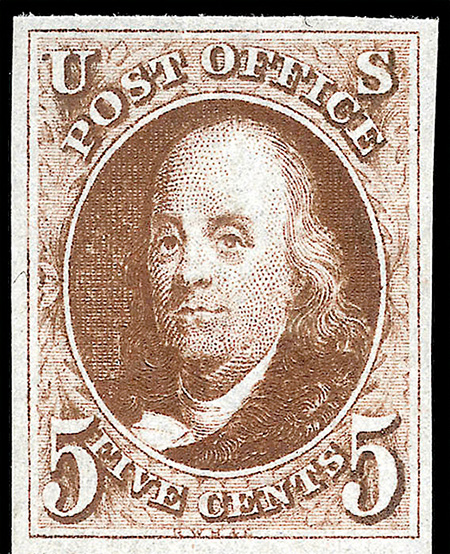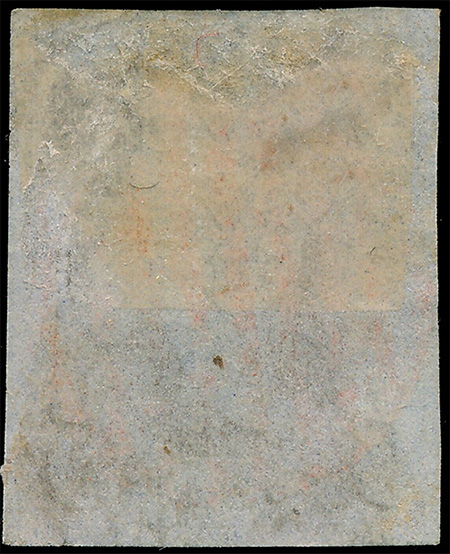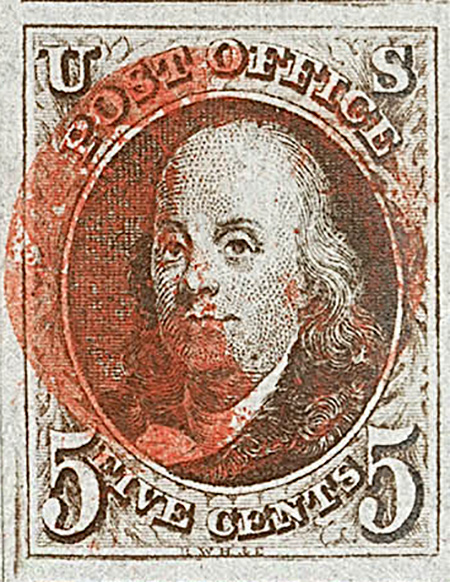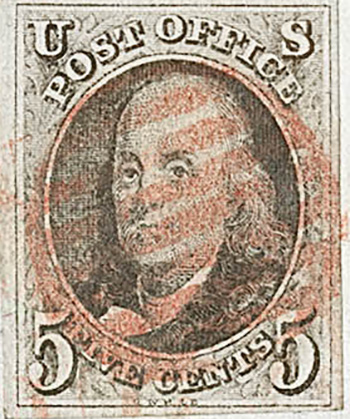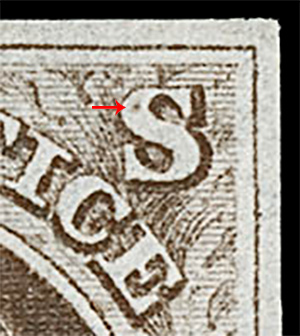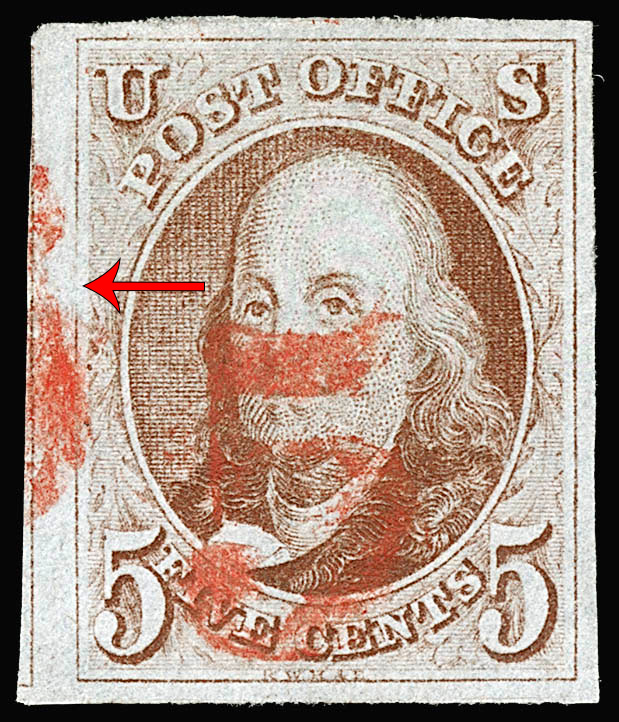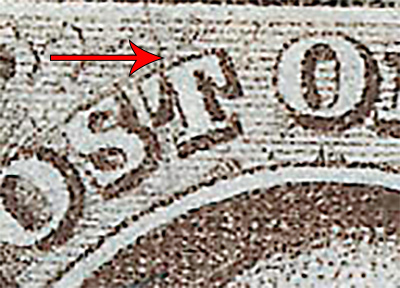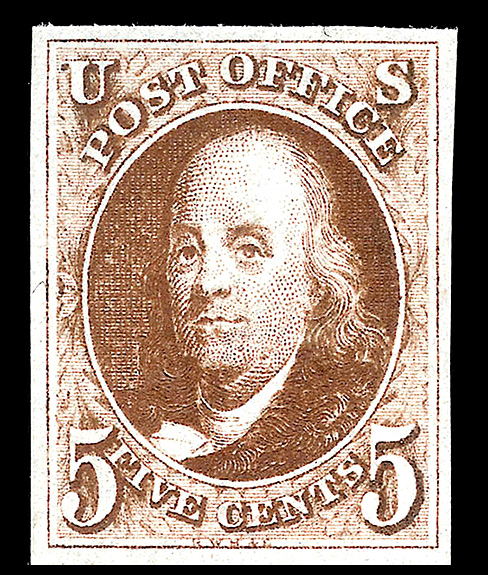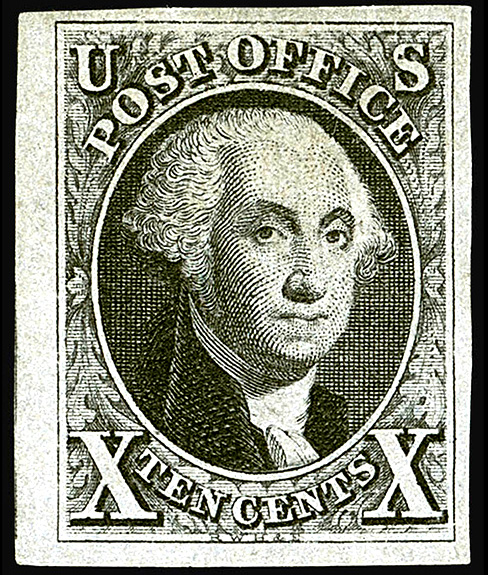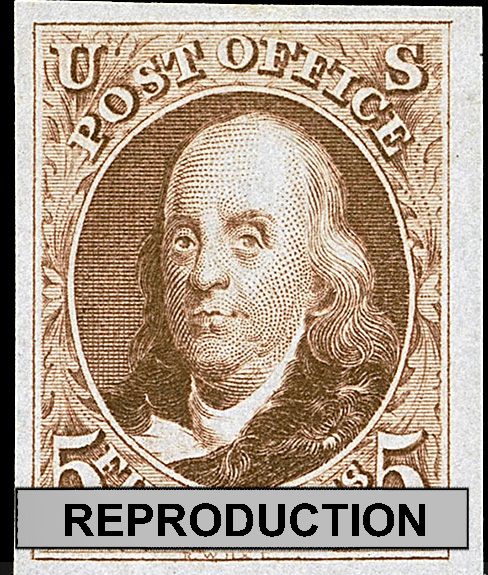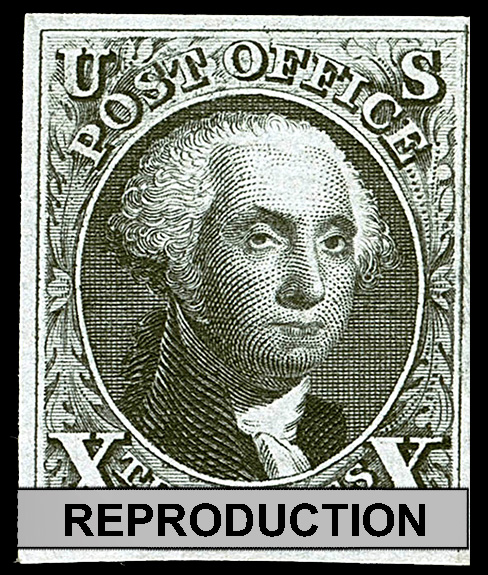#1 - 1847 5¢
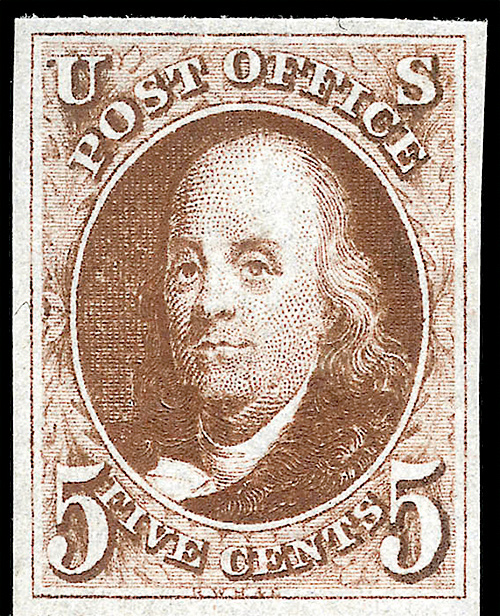
Basic Info
5¢
Red brown, brown
Subject: Benjamin Franklin
Printing Method: Line engraved
Printer: Rawdon, Wright, Hatch and Edison
Perforations: imperforate
Watermark: none
Scott #: 1
Quantity Issued: 3,600,000
Issued: July 1st, 1847
Value
Values are for stamps with four margins. For shades see below for values
Used
$150 - $225
No postmark with gum (MH)
$4,000 - $6,000
Full perfect gum, no postmark
no trace of stamp hinge mark (MNH)
$13,000 - $23,000
The inspiration


The vignette is based on an engraving by John B Longacre, which in turn was based on Joseph Siffred Duplessis' famous portrait of Benjamin Franklin. Franklin was chosen as he was the first postmaster of the United States.The portrait has been used on banknotes (see above) prior to the issuance of this stamp
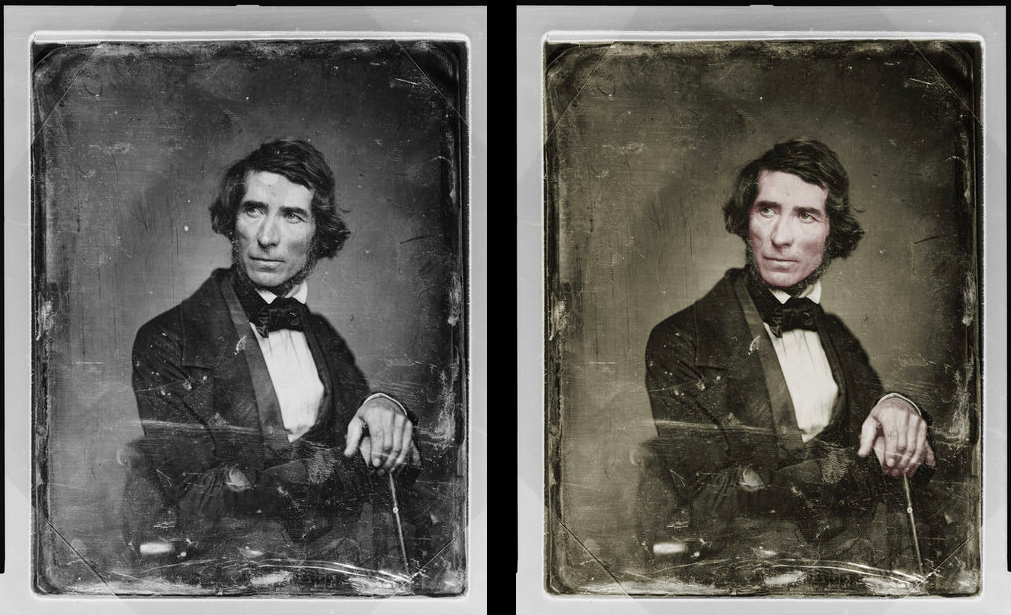
Asher Brown Durand, the vignette's engraver
Counterfeits
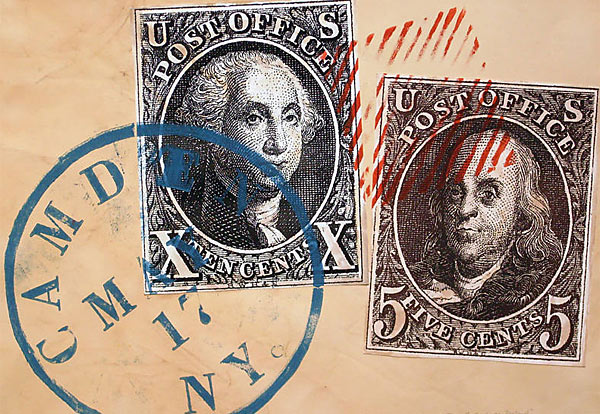
A counterfeit #1 and #2 on piece
The first stamp
By an Act of Congress passed in 1845, and continuing thru the life of the 1847 issue, 5c was the single letter rate for all distances not over three hundred miles.
Under the powers given him by the Act of 1847, the Postmaster-General entered into a contract with Rawdon, Wright, Hatch, and Edson, which was located in New York City and was well and favorably known as Bank Note engravers. No details of this contract are known. It seems reasonable to assume that it contained provisions for the production of stamps of the 5¢ and l0¢ denominations, under specific regulations and conditions, at a specified cost per thousand.
Although the drop rate of letters at the time was 2¢ it was decided not to issue a stamp for this value, which would have to wait until the 1¢ issue of 1851.
Benjamin Franklin was chosen as the vignette subject as he was considered the father of the Post Office and the first Post Master General.
Due to production delays, there were only sufficient stamps to deliver to the New York post office on the official day of introduction, July 1st, 1847. Boston was the second post office to receive a delivery on July 2nd, 1847. The first purchaser was reputedly Congressman Harvey Shaw of Connecticut.
Poor Impressions
By an Act of Congress passed in 1845, and continuing thru the life of the stamp, black ink used on the 1847 10¢ was of satisfactory quality. However, back in those days, colored inks were of more inferior quality. The ink used on this 5¢ was manufactured with earthen pigments, sienna, or umber, which always contributes to rapid plate wear and a poor impression on the stamp. One reason was that the ink used was contaminated with quartz, as during the time, mineral inks almost always contained it to a certain degree. Black ink is made from carbon and causes little wear.
Earliest documented use
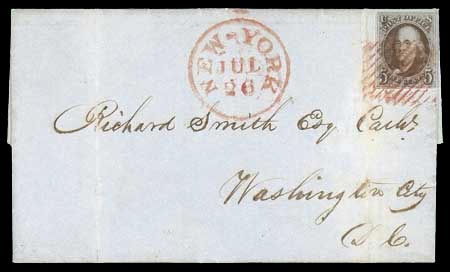
The earliest documented use of #1 is July 7th, 1847 (shown above)
Precancels
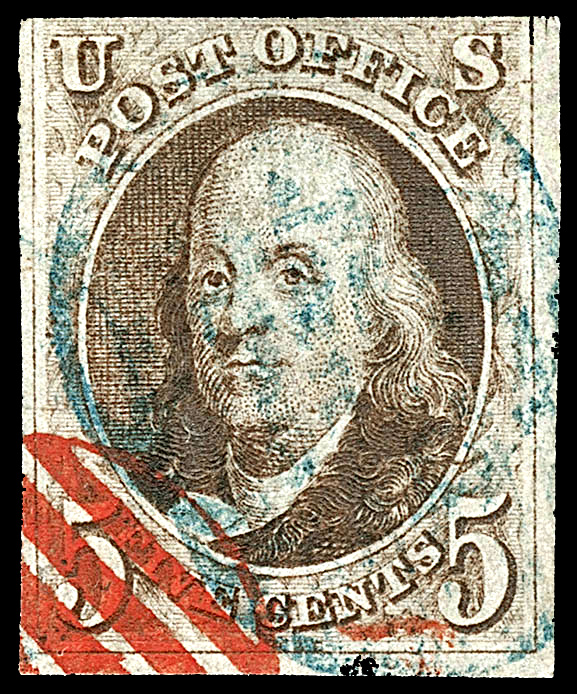
The 7 bar red grid precancel of Wheeling, Virginia.
Shades
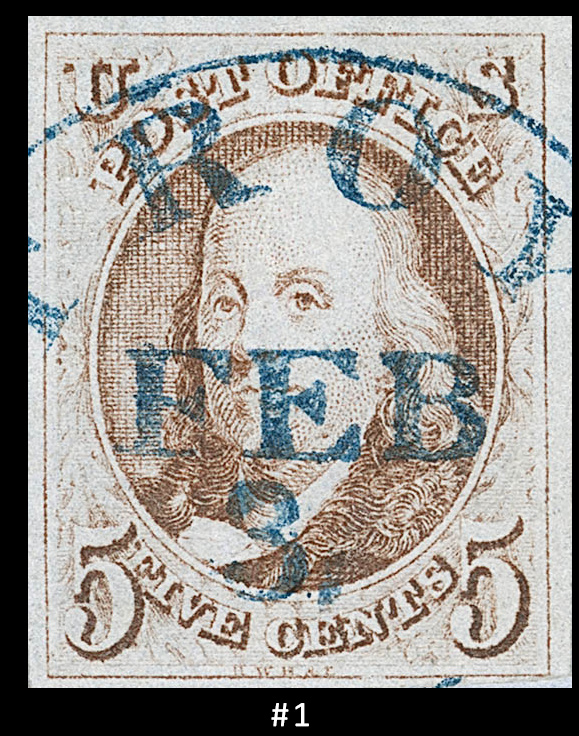
Pale Brown
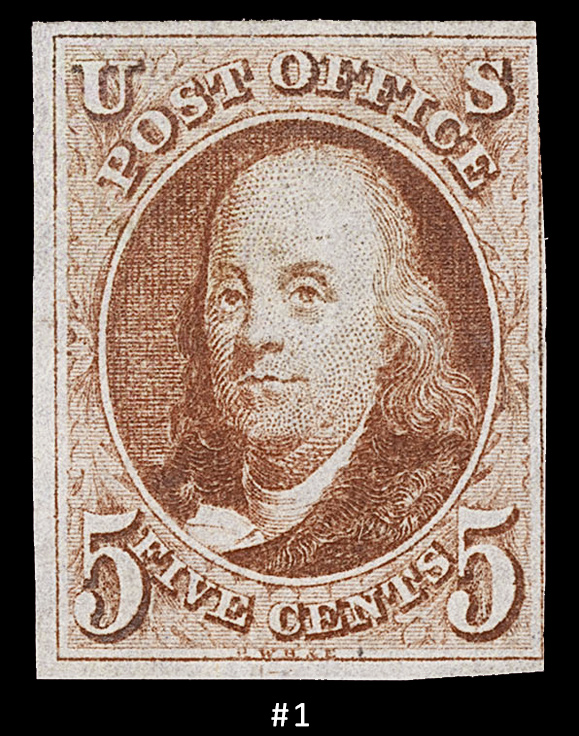
Red Brown
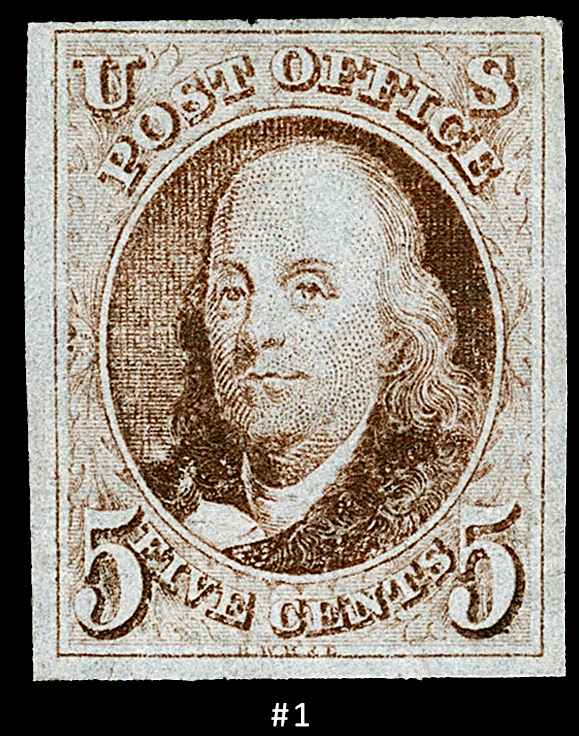
Brown
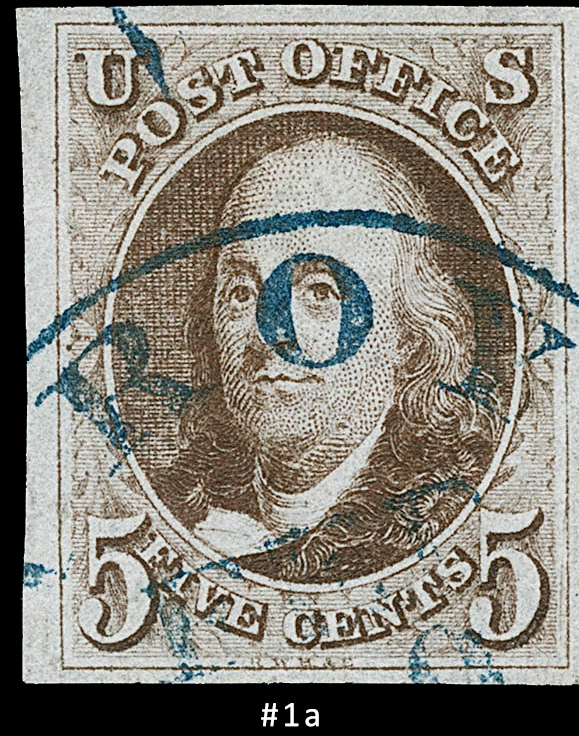
Dark Brown
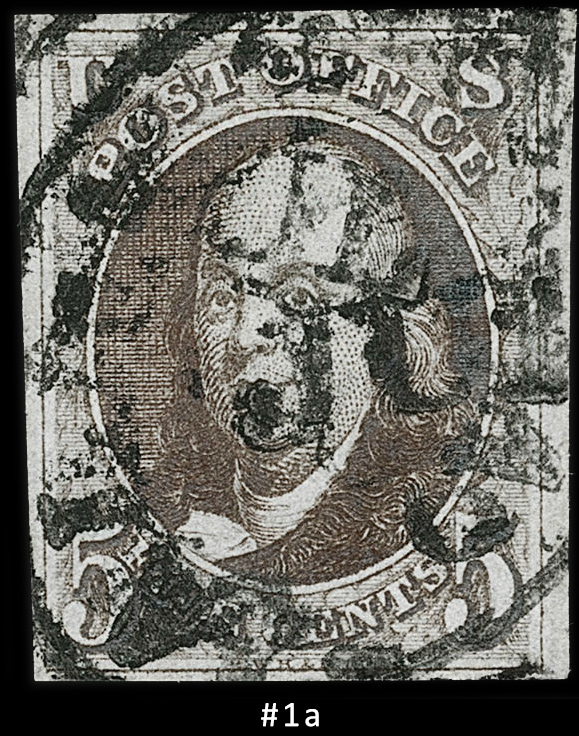
Grayish Brown

Blackish Brown
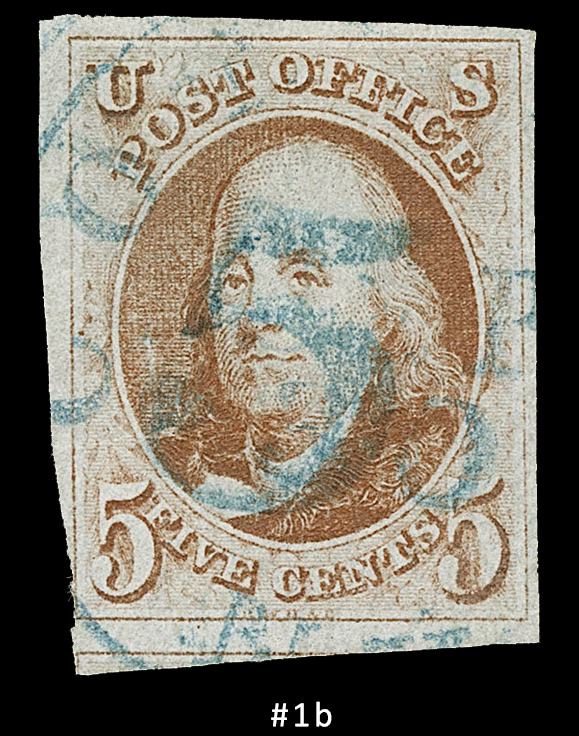
Orange Brown
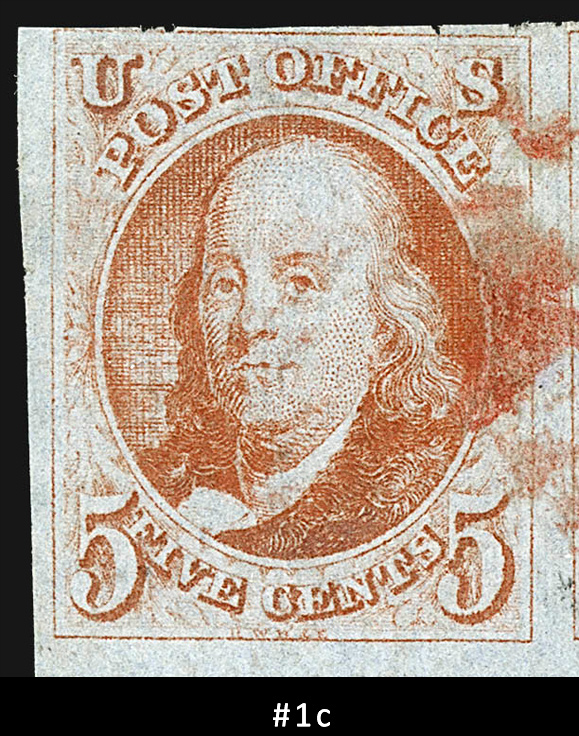
Red Orange
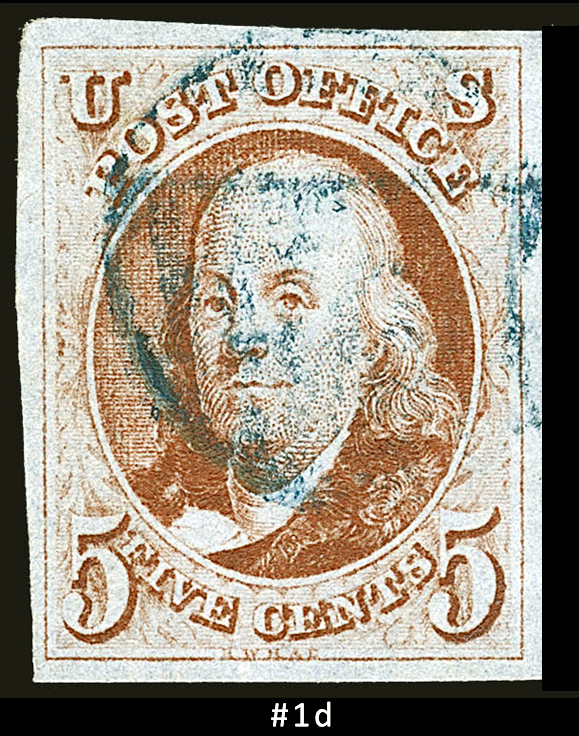
Brown Orange
VALUES FOR SHADES - Used
#1 Pale brown, brown, red brown $150 - $225
#1a Dark brown $200 - $300
#1b Orange brown $225 - $325
#1c Red orange $1,300 - $1,600
#1d Brown orange $300 - $600
Notable Plate Positions

Shown above: A plating mat used for describing plate positions (feel free to copy for your own use)
The 5¢ issue has never been fully plated. The right pane of 100 has been fully plated due to the discovery of a proof plate. The left pane plating is a work in progress
A full sheet
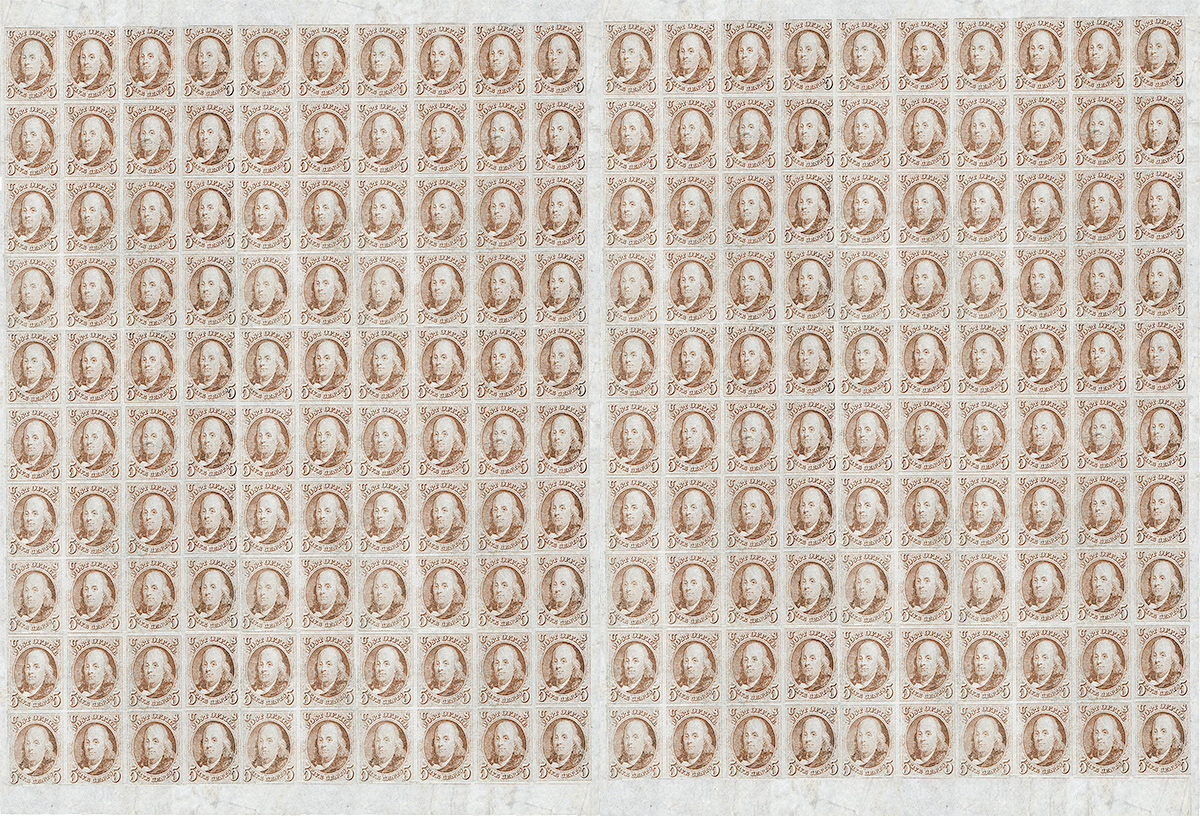
A full sheet of 200 stamps, there was only one plate made.
